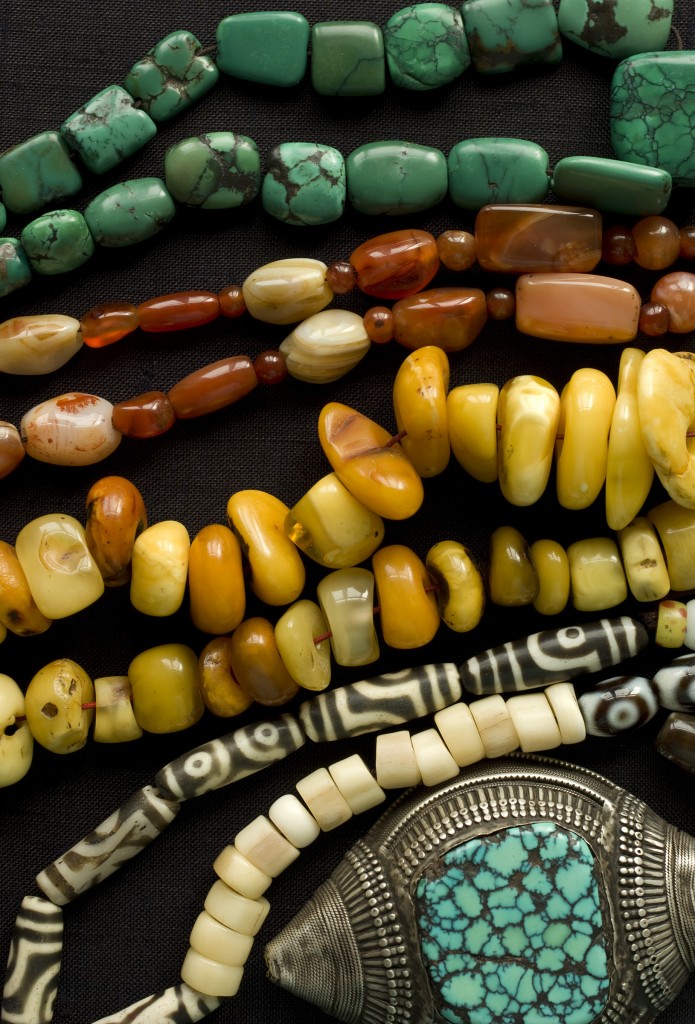Last week, during a talk at the Capital M Literary Festival, Jeff Fuchs said something that got me thinking: “Tibetans own nothing but masses of land, huge herds and a fortune in rocks”. He was showing us some portrait photographs of the Tibetans he met on his journeys while researching and exploring the Tea and Horse Road that connected China with Tibet. Some of them were displaying beautiful collections of jewelry: necklaces, earrings, rings and trinkets made of turquoise, coral and pearls. These materials can’t possible be found naturally in Tibet. That idea resonated in my mind and I remembered reading something along those lines in Chris Buckley’s recently published book “Living Hands – Tibetan Arts and Artisans”.
Chris Buckley explains that Tibetan men and women often have large collections of jewelry around their necks, treasured for fun, decoration, as a store of wealth or amulets for protection. They can be beads, zi stones, silver ornaments, amber, ivory, gawu (amulet cases) and thogcha (good luck charms). Some of these objects are made in Tibet or Nepal. Others travelled vast distances and are a testament to ancient trading links for which no written records exist. Pearls and coral were traded from the Mediterranean. Cloudy yellow amber came from the Baltic. Ivory arrived from India. Turqoise and agate were brought in from Afghanistan. Glass beads were traded from India, China and from eastern Europe.

The photograph above is courtesy of Chris Buckley. From the top: turquoise, agate, amber, zi beads, bone and a turquoise+silver hair ornament.
If you are interested in reading more about Jeff Fuchs’ Tea Horse Road Journey, and his love and passion for tea and mountains, visit his website. And for information about Jeff Fuchs’ expeditions with AsiaTravel visit here.
For more information about Chris Buckley’s book; or a previous review of the book on our blog.
———–
Pictures and text from Chelin Miller, AsiaTravel’s expert blogger on the finer things in China.
